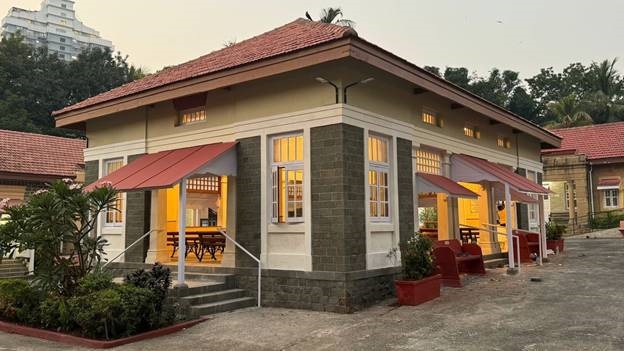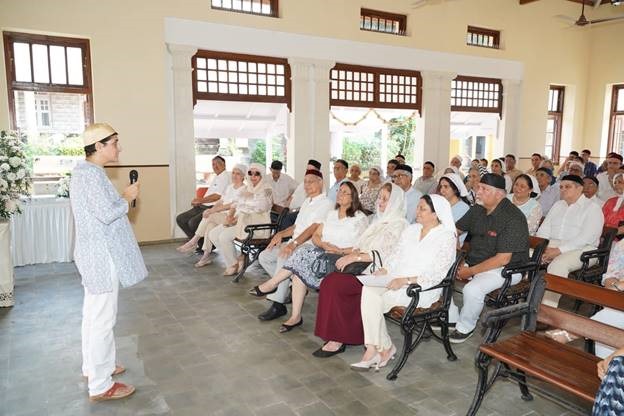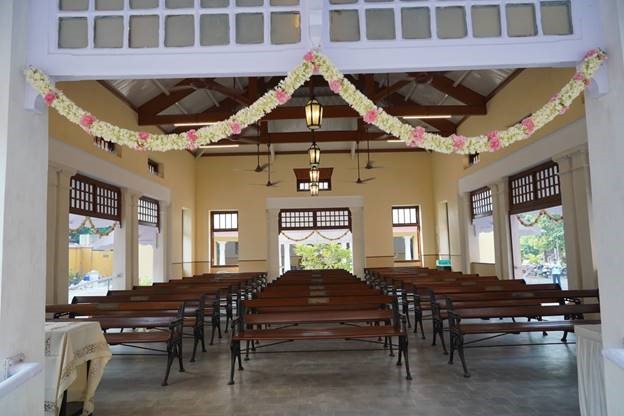The Panday Pavilion, named after the family that originally built it, is one of the two seating areas in the cemetery for non-Parsis. The pavilion, and another structure restored earlier, are part of the Doongerwadi cemetery precinct which is listed as a Grade IIA site under Mumbai’s urban heritage list.
Article by Manoj Ramakrishnan | Free Press Journal
The Panday Pavilion, named after the family that originally built it, is one of the two seating areas in the cemetery for non-Parsis. | FPJ
A visitors’ pavilion at the Tower of Silence cemetery on Malabar Hill, built in 1928 for non-Parsi mourners, has been reopened after extensive restoration work over ten months. A large gathering attended the inauguration ceremony on Friday morning organised by the Bombay Parsi Panchayat (BPP) which manages the cemetery.
The Panday Pavilion, named after the family that originally built it, is one of the two seating areas in the cemetery for non-Parsis. The pavilion, and another structure restored earlier, are part of the Doongerwadi cemetery precinct which is listed as a Grade IIA site under Mumbai’s urban heritage list. The restoration team was led by conservation architect Kirtida Unwalla who had also restored the other pavilion.
A large gathering attended the inauguration ceremony on Friday morning organised by the Bombay Parsi Panchayat (BPP) which manages the cemetery. | Farokh Mojia
hs. A large gathering attended the inauguration ceremony on Friday morning organised by the Bombay Parsi Panchayat (BPP) which manages the cemetery. | Farokh Mojia
hs. A large gathering attended the inauguration ceremony on Friday morning organised by the Bombay Parsi Panchayat (BPP) which manages the cemetery. | Farokh Mojia
A large gathering attended the inauguration ceremony on Friday morning organised by the Bombay Parsi Panchayat (BPP) which manages the cemetery. | Farokh Mojia
A large gathering attended the inauguration ceremony on Friday morning organised by the Bombay Parsi Panchayat (BPP) which manages the cemetery.The restoration, financed by Zal Eranee in memory of his wife Dhun Eranee and executed by Centre for Environment Research and Education (CERE), was a challenging job because of the mix of materials used in the structure and the construction techniques. Dr Rashneh Pardiwala, ecologist and executor of the restoration work, said the pavilion used materials and techniques from different construction periods. “The exterior is made of basaltic stone, the roof support, called the queen post truss, is of timber, the roof is made of Mangalore tiles, the columns from Porbundar stone (limestone) and the beams of brick and concrete,” said Pardiwala.
The Panday Pavilion, named after the family that originally built it, is one of the two seating areas in the cemetery for non-Parsis. | FPJ
Glass artists were brought from Uttar Pradesh to restore the chandeliers. The floors, originally made of concrete tiles, have been restored using similar material. “We had to install a limestone mill at the site to create the lime plaster for the walls. Limestone plastering is not commonly done now,” said Pardiwala.



